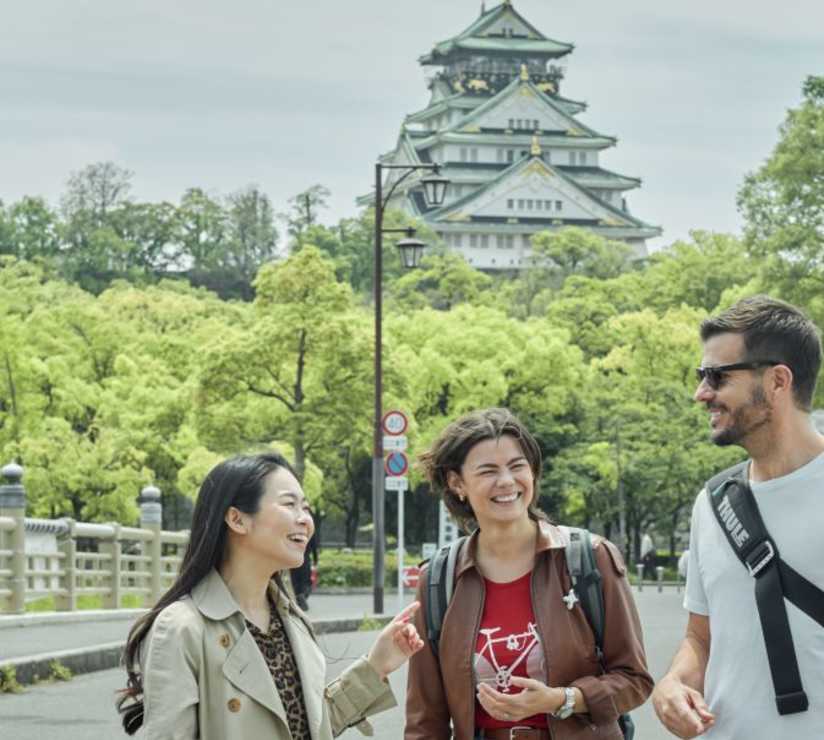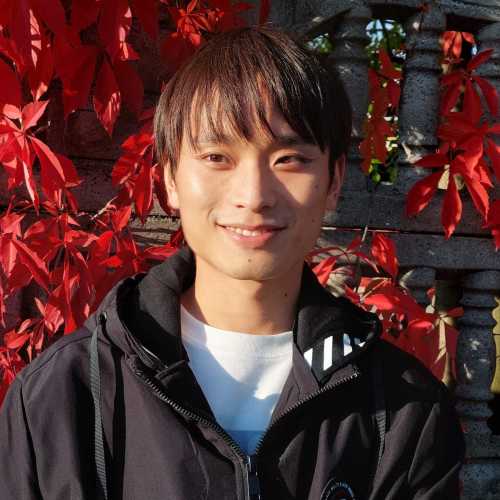Table Of Contents
- Introduction to Osaka: First Impressions and Surprises
- Which Season Is Best for Osaka Day Trips?
- Planning Your Trip with a JR Pass: My Experience
- Comparing Osaka Castle with Other Historical Sites
- Exploring Namba: The Heartbeat of Osaka
- How to Plan the Perfect Kobe Day Trip
- Kobe's Hidden Food Scene Beyond the Famous Beef
- Exploring Street Food Culture in Kobe's Markets
- Exploring Japan's Former Capital Cities
- What Makes Nara Day Trips Different from Tourist Routes?
- Visit the Meticulous Gokuraku Jodo Garden
- Ancient Temples and Modern Cafés: Nara's Perfect Balance
- The Uji Surprise: Green Tea and Literary History
- Towering Views: Seeing Osaka from Above
- My Osaka Itinerary Tip: Don't Overpack — Choose One Place and Stay Late
- Creating a Balanced Osaka Itinerary with Day Trips
- Returning to Osaka: The Street Food Experience
- Beyond Tourist Traps: Authentic Shopping Experiences
- Creating a Balanced Day Trip Schedule
- Day Trip Transportation Tips from a Local
- Finding Travel Inspiration: How I Chose My Destinations
- Finding Your Own Perfect Osaka Day Trip

Interior of Osaka Station with its distinctive roof Image by
Growing up in Osaka, I never fully appreciated how perfectly positioned my city is. It sits at the heart of Kansai like a smug spider in the middle of a transportation web. Osaka is located in the center of the Kansai region, making it an ideal base for exploring western Japan.
Only after friends from Tokyo visited did I realize our advantage: you can reach at least five worthwhile destinations within an hour, and several more within two. For example, the travel time from Osaka to Kyoto is about 15 minutes by bullet train, and you can reach Nara in around 35 minutes.
The secret weapon for any visitor planning Osaka day trips is the JR Pass. While locals can’t use it, I’ve watched countless friends flash that blue booklet and hop effortlessly between cities that would normally require separate tickets and queuing. The bullet trains connect you to Kyoto in 15 minutes, while regular JR lines can get you to Kobe in about 20.
What makes these day trips from Osaka particularly satisfying is how different each nearby city feels. Unlike the homogeneous sprawl you might find around other major cities, each destination around Osaka maintains its distinct character—something I took for granted until I traveled elsewhere.
My grandfather used to tell me that Osaka was blessed by geography—mountains to the north, sea to the south, and flat land in between that made railway construction straightforward. The result is a transportation network so efficient that many locals commute daily from neighboring districts without complaint. The city’s extensive subway system also makes it easy to get around, connecting major attractions and neighborhoods.
For visitors, this means more destinations within reach than you could possibly explore in a single trip or half a day.
When planning an Osaka day trip, consider that Japan’s trains operate with a precision that borders on the supernatural. The average delay on JR lines is less than a minute annually—a fact that continues to astonish my overseas friends. This reliability means you can schedule your day confidently, without building in the buffer time you might need elsewhere.
Osaka Station serves as the main transport hub for most day trips. Unlike the ultramodern glass and steel structures of Tokyo’s terminals, Osaka Station blends contemporary design with practical functionality. The North Gate Building offers panoramic city views that orient you before you even step outside. The station is also conveniently located near several subway lines, making it easy to access from anywhere in the city.
Introduction to Osaka: First Impressions and Surprises
Osaka is a city that greets you with a rush of color, sound, and flavor the moment you step out of Osaka Station. My first real impression was how the city manages to feel both grand and approachable—one minute you’re gazing up at the imposing walls of Osaka Castle, the next you’re weaving through narrow alleys lined with sizzling street food stalls.
Every corner seems to offer a new surprise, whether it’s a tranquil garden tucked behind a bustling shopping street or a world-class museum just steps from a centuries-old shrine. Even if you’re only visiting for a single day, Osaka’s energy is infectious. The city’s history is written into its castle stones and echoed in the laughter of locals sharing takoyaki by the river.
Whether you’re here to explore the castle grounds, sample the city’s legendary food, or simply wander and soak up the atmosphere, Osaka promises a trip full of discovery and delight. It’s a place where you can spend hours getting lost—and love every minute of it.
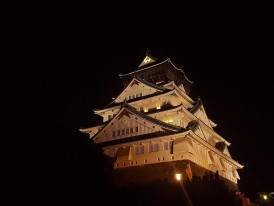
Winter illumination at a temple Image by clsrnand from Pixabay
Which Season Is Best for Osaka Day Trips?
Each season transforms the Kansai region in distinctive ways, affecting which day trips around Osaka might be most appealing.
Spring brings cherry blossoms that cascade across castle grounds and temple gardens. Himeji Castle and Yoshino (in Nara Prefecture) become ethereal landscapes of pink and white from late March through April. The crowds can be overwhelming, but there’s a reason people endure them—the ephemeral beauty creates a shared experience that transcends the tourist-local divide.
During cherry blossom season, even Osaka Castle transforms from an imposing fortress to a romantic backdrop. The castle grounds contain over 4,000 cherry trees, creating one of the region’s most popular viewing spots. If you’re visiting during cherry blossom season, consider combining your day trips with evening hanami parties back in Osaka.
Summer heats up the region considerably, with humid days that can feel oppressive. This is when I recommend day trips to Osaka coastal areas like Awaji Island or mountain retreats like Mount Rokko above Kobe. The elevation provides natural air conditioning, with temperatures often 5-7 degrees cooler than the city below.
Autumn paints the region in fiery reds and golds, particularly in Kyoto’s temple gardens and Minoh Falls (just 30 minutes from central Osaka). The best day trips from Osaka during this season involve strategic timing—visit popular foliage spots on weekdays or arrive early on weekends. Note that the JR Pass increased in price in October 2023, which may affect your travel budgeting if you plan to use it for autumn trips.
Winter brings clear skies and crisp air, making it ideal for photography. Mount Rokko’s night view of Kobe and Osaka shimmers more vividly in winter’s dry air, and illumination events transform castles and temples throughout the region. Some of these winter illumination events may require an entrance fee.
Looking for a private city experience in Osaka?
Explore the city with a local who plans a private day just for you; no groups, no scripts.
Planning Your Trip with a JR Pass: My Experience
When I first started planning my Osaka adventure, the sheer number of train lines and ticket options felt overwhelming. That changed the moment I picked up a JR Pass. Suddenly, the entire Kansai region opened up—Kyoto, Nara, Kobe, and more were just a short train ride away.
The JR Pass isn’t just a ticket; it’s a passport to exploring the best cities around Osaka, letting you maximize your trip and see more than you ever thought possible. If you’re planning to explore beyond the city, I can’t recommend the JR Pass enough—it turns every journey into part of the adventure.
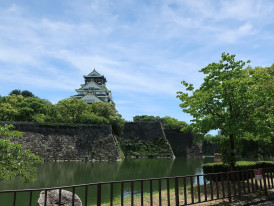
Aerial view of Osaka Castle and its moats Image by Suyeon Kim from Pixabay
Comparing Osaka Castle with Other Historical Sites
When planning day trips, many visitors wonder if Osaka Castle is worth their time. Unlike Himeji Castle, Osaka Castle is a modern concrete reconstruction containing a museum—impressive from the outside but less authentic inside. If you’ve only got time for one castle, make it Himeji. Visitors can easily reach Osaka Castle by getting off at Osakajokoen Station, which is the most convenient subway stop for accessing the castle.
That said, Osaka Castle plays an important role in Japanese history as the stronghold of Toyotomi Hideyoshi, who unified Japan in the 16th century. The museum inside Osaka Castle chronicles this fascinating period when Japan transitioned from warring states to centralized control.
For history enthusiasts, comparing Osaka Castle with Himeji or Hikone castles offers insight into how Japan preserves its heritage—some sites maintain authentic structures while others prioritize accessibility and education. We recommend spending at least half a day at Osaka Castle, a full day at Himeji Castle, and a few hours at Hikone Castle to fully appreciate their unique features.
Exploring Namba: The Heartbeat of Osaka
If Osaka has a pulse, you’ll feel it in Namba. This district is where the city’s famous neon lights burn brightest, and the energy never seems to fade. I love wandering through the maze of many shops, each one offering something new—quirky souvenirs, the latest fashion, or mouthwatering street food. Namba is also home to the iconic Tsutenkaku Tower, a symbol of Osaka’s playful spirit, and the retro charm of the Shinsekai district.
Whether you’re looking to spend hours shopping, sampling local delicacies, or just people-watching under the glow of the signs, Namba is a great place to dive into the city’s vibrant world. It’s the perfect starting point for any Osaka itinerary, and a spot I always recommend for first-time visitors who want to experience the city’s true heartbeat.
What if your day in Osaka was planned by someone who knows it — and you?
City Unscripted matches you with a local host who creates a private experience based on your interests, not a set route.
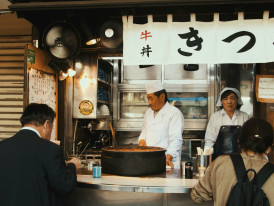
Coffee being served in a shipping container café Photo by Nomadic Julien on Unsplash
How to Plan the Perfect Kobe Day Trip
The Kobe day trip is almost too easy. Twenty minutes on a regular JR train from Osaka Station to Sannomiya, and suddenly you’re in a city that feels both familiar and foreign. While tourists flock to Kobe for the beef (and yes, it’s worth trying), the seafood from Kobe’s harbor offers equally impressive flavors at more reasonable prices. The Akashi Kaikyo Bridge, a remarkable engineering feat and one of the world’s longest suspension bridges, is a must-see for visitors interested in architecture and scenic views.
My friend Yuki runs a small seafood stall in Nankinmachi (Kobe’s Chinatown) where she serves the freshest catches simply grilled with salt and lime. No fancy sauces, no distractions—just impeccably fresh fish that tastes like it was swimming an hour ago.
She inherited the stall from her father, who started selling grilled seafood after losing his fishing boat in the 1995 earthquake. “The sea gives, the sea takes, the sea feeds us anyway,” he used to say. This resilience is characteristic of Kobe, a city that rebuilt itself while preserving its unique character.
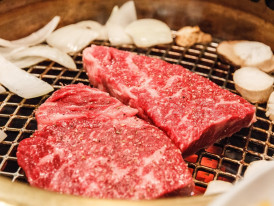
Sizzling kobe beef being cooked at a market stall Image by Steffen Zimmermann from Pixabay
Kobe's Hidden Food Scene Beyond the Famous Beef
While the allure of Kobe beef draws many visitors, savvy travelers on Kobe day trips discover the city's broader culinary landscape. The Nada district, famous for sake production, houses several breweries that offer tours and tastings.
The Hakutsuru Sake Brewery Museum provides an excellent introduction to the brewing process, with samples that demonstrate the profound difference between mass-produced sake and artisanal varieties.
If you're looking for authentic Kobe beef without breaking the bank, skip the tourist restaurants with English menus and head to Gokaku in the Sannomiya area. This modest establishment has been serving quality beef for over 70 years and offers lunch sets that include small portions of the famous beef alongside seasonal vegetables.
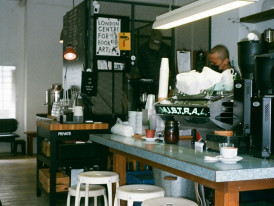
Historic coffee shop interior with vintage equipment Photo by Sy Chen on Unsplash
Exploring Street Food Culture in Kobe's Markets
One of the highlights of any Kobe visit is sampling the street food in Nankinmachi and the surrounding shopping arcades. Unlike Osaka's bold, in-your-face street food culture, Kobe's approach is more refined yet equally satisfying.
Look for steamed buns filled with local Tajima beef, freshly fried gyoza with paper-thin wrappers, and the city's take on taiyaki—fish-shaped cakes with surprising fillings like chocolate-banana or chestnut cream.
The best street food strategy is to graze throughout the day rather than commit to a single large meal. My personal route starts with morning coffee at Nishimura Coffee (a historic kissaten dating to 1948), followed by street food nibbles in Nankinmachi, then perhaps a proper lunch of Kobe beef if your budget allows, and more street food exploration in the evening.
Tip
We match you with the right host, not just any guide.Want to experience the real Osaka with someone who lives there?
A fully private experience, planned and led by a local host who tailors the day to you
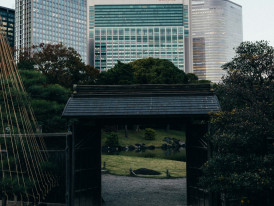
Traditional wooden structure against modern skyline Photo by Tsuyoshi Kozu on Unsplash
Exploring Japan's Former Capital Cities
Many travelers don’t realize that Nara and Kyoto were both capital cities of Japan before Tokyo took that role. This explains their wealth of historical sites—they were once the center of political power and culture for the entire nation. When planning day trips from Osaka, understanding this historical context enhances appreciation of these nearby destinations.
These cities contain layers of history that visitors can peel back like an archaeological dig. Wandering through the preserved streets of Nara or Kyoto feels like stepping back in time to a traditional Japanese town, where the ambiance and architecture evoke centuries of cultural heritage.
Both former capital cities are easily accessible from Osaka Station. Direct trains run frequently, making these historical centers perfect day trip destinations. The contrast between modern Osaka and these more traditional cities creates a fascinating juxtaposition that highlights Japan’s balance of preservation and progress.
What Makes Nara Day Trips Different from Tourist Routes?
Nara deers are famous and seem to appear on every visitor's Insta feed. But a proper Nara day trip should go beyond feeding rice crackers to pushy animals. The eastern part of Nara, beyond Todai-ji Temple, holds quieter treasures that most day-trippers never discover. Many of these hidden gems are just a short walk from the main tourist areas.
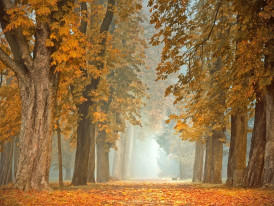
Gokuraku Jodo Garden in early autumn Image by Peggychoucair from Pixabay
Visit the Meticulous Gokuraku Jodo Garden
Gokuraku Jodo Garden sits behind a small temple complex that rarely makes it onto the standard tour routes. Its meticulously maintained landscape represents the Buddhist concept of paradise, with each stone and plant placed with intention. I discovered it accidentally during a rainstorm five years ago and have returned each autumn since.
Ready to plan your perfect day in Osaka?
Start your experience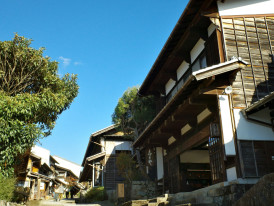
Traditional machiya townhouse exterior in Naramachi Photo by Jared Chen on Unsplash
Ancient Temples and Modern Cafés: Nara's Perfect Balance
Most visitors rush through Nara Park to see the Great Buddha at Todai-ji, then hurry back to catch their trains. By doing so, they miss the contemplative beauty of places like Nigatsu-do Hall, perched on stilts against the hillside. From its wooden balcony, the view encompasses the entire city basin, with Todai-ji’s massive roof visible among the trees below.
For a contemplative day trip from Osaka to Nara, arrive at JR Nara Station by 9 AM, walk through Nara Park early, then continue east to find the quieter temples. Pack a simple lunch to eat in one of the gardens, and consider stopping at Naramachi, the former merchant district, before heading back to Osaka.
The narrow streets of Naramachi preserve the atmosphere of pre-modern Japan, with traditional machiya townhouses converted into cafés, workshops, and small museums. This historic town district retains the unique charm of old Japan, making it a notable destination for visitors seeking local ambiance and cultural heritage. I particularly recommend the Koshi-no-Ie (Lattice House), a former merchant’s home that you can explore at your own pace.
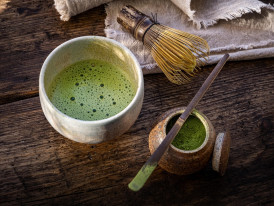
Traditional tea shop interior with matcha being prepared Image by Mirko Stödter from Pixabay
The Uji Surprise: Green Tea and Literary History
Uji deserves special mention as an often-overlooked day trip option from Osaka. Famous for producing Japan's finest matcha tea, Uji offers a perfect half-day excursion. The Byodoin Temple's Phoenix Hall appears on the ¥10 coin, and its recent restoration returned the building to its original vibrant colors—a surprise for visitors expecting the weathered wood tones typical of Japanese temples.
When I take friends to Uji, I always stop at Tsuen Tea, which claims to be Japan's oldest tea shop, operating continuously since 1160. The current owner is the 24th generation of his family to run the shop, and he can explain the differences between various grades of matcha with both scientific precision and poetic appreciation.
Towering Views: Seeing Osaka from Above
There’s something magical about seeing Osaka from above, where the city’s sprawling neighborhoods and winding rivers come into focus. The Umeda Sky Building is my go-to for a panoramic view—the observation deck feels like you’re floating above the city, with skyscrapers stretching to the horizon. For a different perspective, the castle grounds at Osaka Castle offer sweeping vistas framed by ancient stone walls and cherry trees, especially beautiful during cherry blossom season.
And if you want to see the city’s playful side, head to Tsutenkaku Tower in Shinsekai, where the observation deck gives you a bird’s-eye view of the bustling streets below. Each spot offers a unique way to experience Osaka, making them great places to visit whether you’re a first-timer or a returning traveler looking for a new angle on the city.
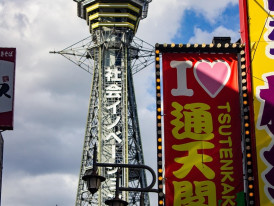
Tsutenkaku Tower glowing against evening sky Image by Marco Catullo from Pixabay
My Osaka Itinerary Tip: Don't Overpack — Choose One Place and Stay Late
The most common mistake I see visitors make when planning itinerary options for an Osaka day trip is trying to visit multiple cities in a single day. Sure, it’s technically possible to see parts of Kyoto and Nara in one day, but you’ll spend more time on trains than actually experiencing either place.
Instead, choose one destination and allow yourself the luxury of staying until evening. Most tour groups and day-trippers leave by 4 PM, meaning you’ll have popular sites nearly to yourself if you linger. Then, return to Osaka just in time to see Tsutenkaku Tower illuminated against the night sky, or wander through the Minami District as the streets come alive.
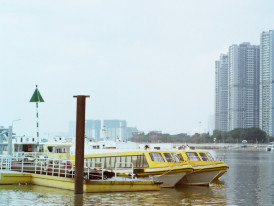
Small boat cruising on Yodogawa River with city skyline Photo by Caroline on Unsplash
Creating a Balanced Osaka Itinerary with Day Trips
A perfect Osaka itinerary might allocate two days for exploring the city itself, followed by two or three day trips to nearby destinations. Spending the right amount of time in each place ensures you don’t feel rushed and allows you to fully appreciate each experience. This balanced approach gives you a sense of both urban Osaka and the surrounding region, without the exhaustion of changing hotels repeatedly.
When crafting your Osaka itinerary, consider alternating busy days with more relaxed ones. After a full day walking through Kyoto’s temples, perhaps schedule a leisurely morning in Osaka’s Nakazakicho neighborhood.
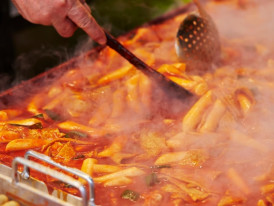
Close-up of street food vendor's hands working
Returning to Osaka: The Street Food Experience
When you return from your day trips, Osaka’s famous street food scene offers the perfect welcome back. Unlike other Japanese cities that tuck their food establishments away in department store basements or down quiet alleys, Osaka proudly displays its culinary culture on the street for all to see, smell, and taste.
Dotonbori is the most famous street food district, with vendors selling takoyaki (octopus balls), okonomiyaki (savory pancakes), and kushikatsu (deep-fried skewered meats and vegetables). At night, the district comes alive with bright lights illuminating the bustling street food scene, creating a vibrant and lively atmosphere. But locals know that some of the best street food hides in less touristy areas like Tenma and Fukushima.
The street food in Osaka isn’t just about eating—it’s performance art. Watch as takoyaki vendors flip the sizzling balls with practiced precision, or stand mesmerized as kushikatsu chefs maintain perfect oil temperatures through intuition alone.
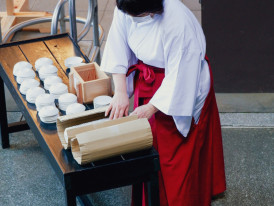
Traditional craftsman working on a handmade item Photo by Susann Schuster on Unsplash
Beyond Tourist Traps: Authentic Shopping Experiences
Insteeid of mass-produced knick-knacks, look for local specialties with genuine connections to the region: Kobe leather goods, Uji tea, or traditional crafts from Kyoto’s workshops. Some markets have become a popular spot for both locals and tourists seeking unique gifts.
The best souvenirs often come from unexpected places—a neighborhood hardware store in Kobe might sell handcrafted garden tools that make unique gifts, while a paper shop in Kyoto could offer letterpress cards produced on century-old presses.
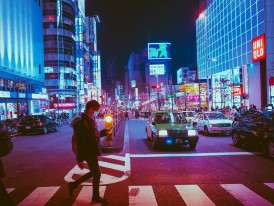
Osaka cityscape at dusk with neon signs beginning to light up and trains visible in the foreground. Image by Masashi Wakui from Pixabay
Creating a Balanced Day Trip Schedule
A perfect day trip from Osaka might look like this: Morning train to your chosen destination, leisurely exploration until mid-afternoon, late lunch at a local spot (not a tourist restaurant), then continued wandering as the crowds thin.
As dusk approaches, find a good viewpoint to watch the transition from day to night—perhaps Kobe’s harbor, Kyoto’s Kiyomizu-dera Temple, or Nara Park as the deer settle down for the evening. My favourite part of these day trips is watching the city lights come on from a scenic spot, creating a memorable end to the adventure.
Return to Osaka with enough energy to enjoy a late dinner in your neighborhood—or venture to Dotonbori for street food if you’re still feeling adventurous. This approach gives you both the day trip experience and a taste of Osaka’s famous night scene.
If you’re particularly interested in the things to do in Osaka, consider dedicating at least two full days to the city itself. There are enough hidden corners and local experiences to fill a week without ever taking a train to another city.
For those determined to make the most of their JR Pass, remember that Osaka experiences are as much about the journey as the destination. The clean, punctual trains are an attraction themselves for many visitors.
Looking for Osaka day trips with a twist? Sometimes the best choice is sticking around for the evening — and seeing the city’s favorite parts glow.
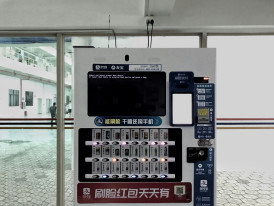
Ticket machines at train station with English instructions Photo by Chauncey LI on Unsplash
Day Trip Transportation Tips from a Local
When departing from Osaka Station for your day trips, arrive 15-20 minutes before your train. The station’s scale can be disorienting for first-time visitors, and finding the correct platform sometimes requires navigating through department stores or underground passages.
If you have an extra day in your itinerary, consider using it to explore lesser-known destinations or revisit a favourite spot for a more relaxed experience.
For destinations like Kyoto or Kobe, regular JR trains offer better value than the Shinkansen unless you’re extremely pressed for time. The cost difference is substantial, while the time saved is often minimal once you factor in the extra walking distance to Shinkansen platforms.
Finding Travel Inspiration: How I Chose My Destinations
With so many options, finding travel inspiration for my Osaka trip was both exciting and a little daunting. I started by jotting down the classics—Osaka Castle, the Umeda Sky Building, and a few must-try street food spots. But what really shaped my itinerary were the stories I heard from locals and fellow travelers: a hidden temple in Nara, a sake brewery in Kobe, a garden in Uji that looked like paradise.
Each city offered its own flavor, and every trip brought a new layer of discovery. If you’re looking for travel inspiration, let curiosity be your guide—Osaka and its neighbors are full of great places to visit, each with their own story waiting to be uncovered.

Traditional tea room with rain visible through window Photo by Wang Sheeran on Unsplash
Finding Your Own Perfect Osaka Day Trip
What ultimately makes the best day trips from Osaka memorable isn’t checking off the most sites or visiting the most cities. It’s about finding those unexpected moments—a conversation with a local craftsperson, a perfect cup of tea as rain patters on a temple roof, or the way light filters through ancient castle windows. We hope this inspires you to discover your own memorable moments on your Osaka day trip.
Let your interests guide your choices. History buffs might prefer Himeji and Nara, or consider a day trip to Hiroshima to see the iconic Atomic Bomb Dome, a UNESCO World Heritage Site symbolizing both tragedy and peace. Food enthusiasts will find paradise in Kobe and Uji. Nature lovers should consider Mount Rokko or Minoh Falls. For something unique in Osaka itself, don’t miss Namba Yasaka Jinja, famous for its striking lion-head-shaped architecture. Whatever your preference, Osaka’s central location ensures you’re never more than a train ride away from something extraordinary.
For more travel inspiration and detailed itineraries, check out our full guide to planning the perfect day trips from Osaka.
What if your day in Osaka was planned by someone who knows it — and you?
City Unscripted matches you with a local host who creates a private experience based on your interests, not a set route.
Want to experience the real Osaka with someone who lives there?
A fully private experience, planned and led by a local host who tailors the day to you
